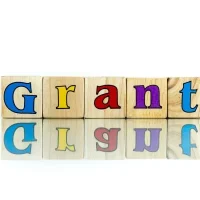Deadline: 23-Dec-22
The National Institutes of Health (NIH) invites applications for Planning Grants (R34) to inform the planning, design, and initial development of adolescent tobacco cessation behavioral intervention studies, with an emphasis on the critical developmental risk period ranging from mid-to-late adolescence (i.e., approximately 14-20 years old).
The overarching purpose of this Funding Opportunity Announcement (FOA) is to provide support for research to facilitate well planned clinical trials aimed at advancing the science of tobacco cessation among adolescents.
Projects supported by this FOA must be grounded in the adolescent developmental literature and draw on a well-established theoretical model of behavior change. Planning activities could include, but are not limited to, preliminary studies and/or data acquisition to address information gaps related to the study population, intervention approaches, and/or outcomes/endpoints; feasibility and pilot studies to assess intervention viability and/or trial design; and testing of recruitment, retention, and adherence strategies to increase participant engagement and scientific rigor.
Research Objective
This FOA is intended to support clinical trial planning activities necessary to complete a future full-scale clinical trial of an adolescent tobacco cessation behavioral intervention. The planning activities will depend on the type of intervention under study and its stage of development, but may include collection of pilot/feasibility data, testing of recruitment strategies, and refinement of study design and intervention content. Pilot/feasibility trials, if included, should be designed so that results will provide information of high utility to support decisions about further development of the intervention approach or study design.
Funding Information
- NCI and NIDA intend to commit $3 million total across the fiscal years (FYs) starting in FY 2023 to fund up to 4 awards.
- Direct costs are limited to $450,000 over a 3-year project period, with no more than $225,000 in direct costs allowed in any single year.
- The maximum project period is three years.
Examples
Examples of relevant areas of research include but are not limited to:
- Test and refine theory-derived intervention targets (i.e., objective, quantifiable, reproducible measures of target engagement);
- Identify and test strategies to support successful recruitment and retention of adolescents in cessation trials, including strategies to address practical challenges and ethical considerations related to the study population, as well as developmental considerations related to adolescent participant engagement;
- Perform studies to adapt and/or refine existing tobacco cessation behavioral treatment paradigms to address new tobacco products and new use patterns among adolescents, and/or to ensure they are developmentally and culturally appropriate;
- Collect feasibility data to inform decisions related to intervention approaches, study design, and/or study endpoints;
- Determine the acceptability of the intervention to study participants;
- Adapt and test an intervention or outcome instrument for a population that differs from the population for which the instrument was originally designed (e.g., the original intervention or outcome instrument was developed for adults and the proposal is to adapt and test with adolescents);
- Develop and pilot test the effectiveness of cessation intervention training tools (e.g., school-based intervention protocols meant to be implemented by teachers and other school staff; peer-to-peer counseling trainings);
- Determine protocols to optimize and adequately measure adherence to an intervention; determine if the level of achieved adherence is adequate to test the intervention;
- Standardize and validate survey instruments;
- Develop methods for measuring intervention fidelity, especially those intended to be implemented, disseminated and scaled up to real world settings and delivered by non-research staff.
Eligibility Criteria
- Public housing authorities/Indian housing authorities
- City or township governments
- Independent school districts
- Native American tribal governments (Federally recognized)
- Nonprofits having a 501(c)(3) status with the IRS, other than institutions of higher education
- Public and State controlled institutions of higher education
- For profit organizations other than small businesses
- Others
- State governments
- Special district governments
- Private institutions of higher education
- Small businesses
- Nonprofits that do not have a 501(c)(3) status with the IRS, other than institutions of higher education
- Native American tribal organizations (other than Federally recognized tribal governments)
- County governments
For more information, visit Grants.gov.
For more information, visit https://www.grants.gov/web/grants/view-opportunity.html?oppId=343909








































